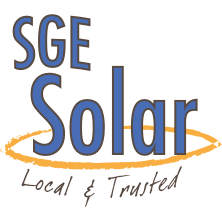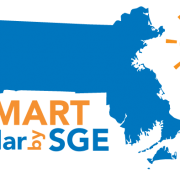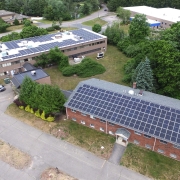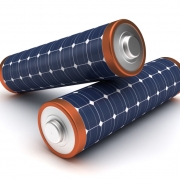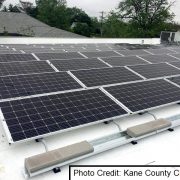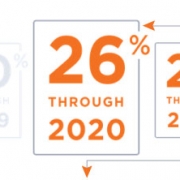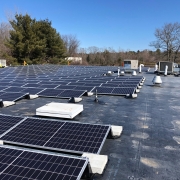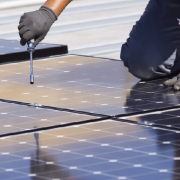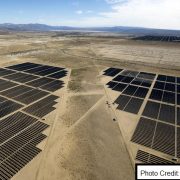How Long Does It Take to Break Even With Solar Panels?
By Mikey Rox
June 15, 2017
Read the original article Here
Solar power has advanced leaps and bounds over the past couple decades, and those grid panels that harness the power of the sun and turn it into energy are everywhere. It’s not uncommon to find at least one house in your neighborhood that has panels covering every square inch of its roof.
You may have also been approached by a solar company rep about outfitting your home with panels. (These guys and gals are almost as ubiquitous as the product they’re selling.) And maybe you don’t understand the mechanics of solar home power — or its benefit to your wallet — which may make you hesitant to explore the option.
Well, you’re not alone. Those of us who haven’t adopted solar energy yet still have a lot of questions — namely, what’s this going to cost? And when will I break even?
The cost of solar panels
First, let’s get down to the nitty-gritty of just how much solar panels will set you back. It’s not cheap to save the planet, even though the sun has been free of charge for billions of years.
The easiest way to calculate the average cost of solar panels, according to New England-based solar-installation company EnergySage, is to look at its price in dollars per watt, and those numbers are fairly consistent across the country.
This year, “most homeowners are paying between $2.87 and $3.85 per watt to install solar, and the average gross cost of solar panels before tax credits is $16,800,” says EnergySage’s data. Figure in tax credits and the price comes down to $10,000 to $13,500, based on the average 5kW (5,000 watts) system that’s typically installed in the United States. EnergySage also says these numbers are about 9 percent lower than last year, but recommends comparing prices quoted to other homeowners in your area.
Now that we know how much the system will set us back, the next reasonable question is how long will it take to break even. (See also: 10 Ways Anyone Can Go Solar and Save on Energy)
When you’ll break even
Sarah Hancock is a digital marketing strategist who manages the solar coverage at BestCompany.com, an online review site that ranks companies in different industries. She says the amount of time it takes to break even depends on three main factors.
1. Current utility price
The higher the current electricity price is in your area, the more money you will save by going solar, which results in a faster break even time, Hancock says.
“For example, an individual who lives in California, where the price of electricity currently sits at about 17 cents per kilowatt-hour, will break even quicker than an individual who lives in Washington, where the electricity price is only 9 cents per kilowatt-hour, because the Californian will be saving more on his electricity bill each month,” Hancock says.
2. Available incentives
These vary from state to state. There are a number of different incentives to take into consideration, including tax credits, rebates, performance payments, and tax exemptions. The more incentives available to you, the quicker your break-even time will be.
“One of those incentives is the 30 percent federal tax credit,” says Andy Schell, marketing manager at Paradise Energy Solutions. “This credit allows solar owners to recoup 30 percent of the project’s cost. If you aren’t able to recoup all 30 percent in year one, the remaining amount can be carried forward for 20 years until the full credit is expended. In addition, USDA grants and accelerated depreciation schedules are available for qualifying businesses and farms.”
This is a good resource to find solar-energy incentives available in your state.
3. Method of payment
According to Hancock, you can purchase the panels outright, or get them on loan, lease, or PPA (power purchase agreement — which is a financial agreement that allows a developer to arrange the design, permits, financing, and installation of a solar energy system, and lasts anywhere from 10 to 25 years).
However, there are fewer studies supporting the increased home value when you upgrade your home through a PPA or a lease. The reason is simple: With an upfront purchase or loan, the new buyer will not have to pay for any of the electricity produced by the panels because you would have already paid for it. With a PPA, the new buyer will still pay for electricity, simply at a lower rate than what other neighbors will pay to the utility company. Those agreements are easily transferable and can also be bought out by either seller or buyer if necessary.
The payment method that will result in the quickest break-even time varies from state to state depending on the two other factors mentioned above — utility price and available incentives. If you live in a state with high electricity prices and several incentives, you will probably break even quicker with a loan because your energy savings will be higher than your loan payment. However, if you live in a state with low electricity prices and few incentives, you’ll most likely break even faster with an outright purchase.
“To provide a general range,” Hancock says, “most individuals who go solar will break even in 15 to 25 years.”
Leasing versus buying a solar system outright
“We guide homeowners with what we’ve seen is the question that is most likely to help them decide what route to take: How much is your tax liability?” says Julio Daniel Hernandez, a representative of renewable energy company EnLight.Energy.
If your tax liability is big enough right now to able to take full advantage of the Federal and possible state tax incentives, he says, then you should take advantage of the available loans and tax credits. If you don’t have the tax liability, then a PPA/Lease makes more sense. You’ll get access to all of the energy your solar system can provide at a cheaper rate than your utility company (usually around 20% savings) and will not ever have to pay a dime out of pocket.
As far as break-even calculations cost go, Hernandez’s estimate is much more liberal than Hancock’s.
“Break-even with a PPA/lease is zero because you don’t pay anything; you just start saving right away similar to a third party electric company in a deregulated market,” he says. “If you buy a system, depending on the incentives available to you, break-even point should be around eight years or less.”
How incentives and pricing have evolved
As an early adopter of solar power a decade ago, you would have made out like a bandit with incentives, but that’s not the case now that so many people are switching over to the energy solution. But as with all technology, the longer it’s been around, the cheaper it becomes on the front end.
“Unfortunately, there are fewer incentives available now than there were 10 years ago due to the increased popularity of solar power,” explains Hancock. “However, the good news is that the price of solar panels has dropped by more than 60 percent over the past 10 years. So, while fewer federal and state solar incentives are up for grabs, solar power is still more affordable than ever for consumers.”
Is it a good investment?
In most states, solar power is a solid investment that will result in a significant return over the next 20 to 30 years.
“For example, an individual in California who purchases a solar system outright can probably expect to see a return between $30,000 and $40,000 over the next 25 years, while an individual in Washington could expect a return of about $10,000 for the same scenario,” Hancock says.
Although the dollar-for-dollar return isn’t as high for the Washingtonian as it is for the Californian, both individuals are still saving money with solar power.
Says Hernandez, “Your home value is estimated to go up $15,000-plus by upgrading to solar energy. Some of this depends on the size of the system, but studies are showing that the bulk of the increase comes from simply putting panels on and then there’s only a slight additional shift upward based on how big the system is.”
